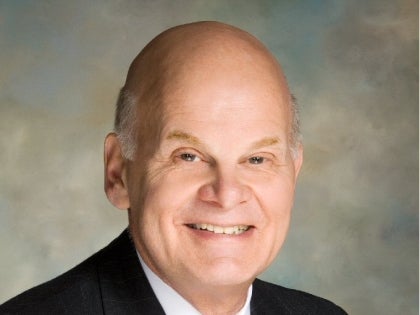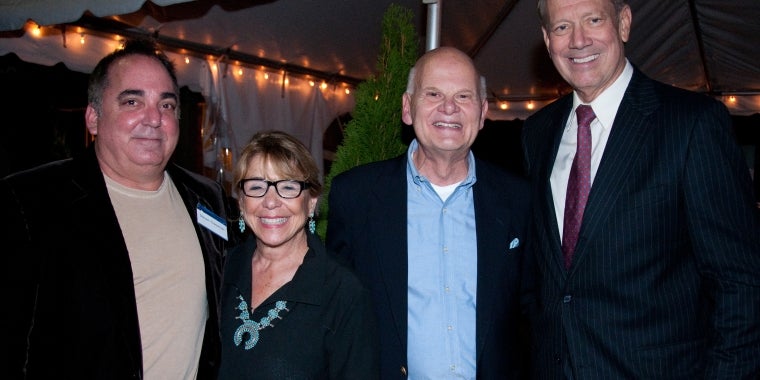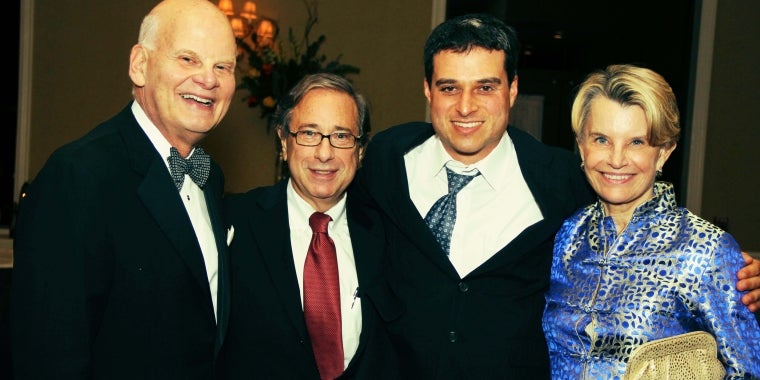
A.g. Schneiderman Releases Charities Fundraising Report and Issues Tips to New Yorkers Donating This Holiday Season
Stephen M. Saland
December 14, 2011
-
ISSUE:
- Consumer Protection
Professional For-Profit “Telemarketers” Keep 63 Percent of Money Raised; Fewer Than 37 Cents Per Dollar Go To Charity
AG’s Provides Consumer Tips, Online Tools To Help New Yorkers Make Informed Decisions On Where To Give, and Ensure Dollars Go Where Intended
Attorney General Eric T. Schneiderman today released his office's annual fundraising report documenting how for-profit “telemarketers” pocket the bulk of contributions New Yorkers give to charities. The Attorney General also issued a guide for consumers planning on making charitable contributions this holiday season, with important information to ensure that donations go where intended.
According to Pennies for Charity, Where Your Money Goes: Telemarketing by Professional Fundraisers, in 2010, an average of just 36.9 cents of every charitable dollar raised by these professional telemarketing companies actually went to charity. Many charities across the state received even less – and in 61 of the 564 telemarketing campaigns, the charities actually lost money.
“The winter months are an especially difficult time for those in need, and thankfully, many generous New Yorkers are eager to extend a helping hand during the holiday season. That’s why it’s important for donors to know exactly how much of their money will be spent on charitable programs and how much will be used to pay for fundraising costs,” Attorney General Schneiderman said. “Generosity is the hallmark of the holidays, and my office wants to ensure that New Yorkers planning on making a charitable donation this year have the information they need to protect themselves and the people they aim to help. Especially in these tough economic times, the people of this state deserve to know that their hard-earned dollars are going where they are intended to go.”
The report synthesizes information filed with the Attorney General’s Charities Bureau by professional fundraisers who conducted telemarketing campaigns in 2010. The Attorney General’s interactive Web page also allows potential donors to easily search the report by the name of the charity or by region of the state. A link to the search tool can be found on the Attorney General’s Web site at www.charitiesnys.com. Users can see how much money was raised and how much money actually went to each charitable organization.
According to the report, telemarketers raised a total of over $249 million on behalf of 411 charities in 2010. In total, $157 million, or approximately 63 percent, was paid to the telemarketers as profits, fees and other costs of the campaigns, leaving charities with less than 37 percent of the money actually raised for their causes.
Some of the significant findings regarding the 564 fundraising campaigns covered in the Attorney General’s report include:
· In 77 percent, or 435 of the 564 campaigns, the charities kept less than 50 percent of the funds raised.
· In 263, or 47 percent of the 564 campaigns, the charities retained less than 30 percent of the funds raised.
· In 61 of the 564 campaigns reflected in the report, charities actually lost money.
· In only 46 of the 564 campaigns did the charity retain at least 65 percent of the money raised, the amount deemed acceptable under the Better Business Bureau’s standards for charitable organizations.
· In total, 63 percent, or $157 million, of the funds raised by 81 telemarketers in 2010 was paid to fundraisers for fees and/or used to cover the costs of conducting the campaigns. By comparison, charities retained 37 percent, or $92 million, of the total funds raised in the campaigns.
Since taking office, Attorney General Schneiderman has aggressively pursued charity fraud to protect New Yorkers’ hard-earned dollars. Last week, the Attorney General announced he successfully barred a Connecticut fundraising company and its owner from soliciting charitable contributions in New York State after fraudulently using telephone solicitations for over 30 public safety organizations. The Attorney General also shut down the Long Island-based Coalition Against Breast Cancer (CABC) which solicited $9.1 million from the public over the past five years, but spent virtually no money on the breast cancer programs it said it supported. Additionally, last month, the operator of a bogus Long Island charity, Coalition for Breast Cancer Cures, was sentenced to 2 to 6 years in prison for stealing over $500,000 intended for breast cancer, and he and his wife were also ordered to pay $1.5 million in restitution, as part of a settlement secured by Attorney General Schneiderman.
In light of this report and as the end-of-the year giving season begins, Attorney General Schneiderman also issued tips for consumers as they consider making charitable contributions:
Resist Pressure To Give On The Spot. If you receive a call from a telemarketer, do not feel pressured to give over the phone. You can just say no. If you choose not to hang up, you should ask the caller what programs are conducted by the charity, how much of your donation will be used for charitable programs, and how much is the telemarketer being paid and how much is the charity guaranteed.
Look Up Charities. Review information about the charity before you give. Check the Attorney General’s website – wwwcharitiesnys.com – for charities’ financial reports or ask the charity directly for this information. Confirm that the charity is eligible to receive tax-deductible donations by searching the IRS website at www.irs.gov/app/pub-78/. Some additional websites with helpful information include:
American Institute of Philanthropy - www.charitywatch.org
Better Business Bureau Wise Giving Alliance - www.bbb.org
Charity Navigator - www.charitynavigator.org
GuideStar - www.guidestar.org
Give to Established Charities. Donate to organizations you are familiar with, or have a verifiable record of success meeting their charitable missions, whether it is establishing a college fund or providing health services. Closely examine charities with names similar – but not identical to – more established organizations.
Ask How Your Donation Will Be Used. Ask specifically how the charity plans to use your donation, including the services and organizations your donation will support. Avoid charities that make emotional appeals but are vague in answering your questions. Be wary if an organization will not provide written information about its charitable programs and finances upon request. Any legitimate organization will be glad to send you this information.
Avoid Unsolicited Emails. These messages do not usually come from legitimate charities, and responding to them may make you vulnerable to identity theft and fraud. Check the Department of Homeland Security’s tips, such as Avoiding Social Engineering and Phishing Attacks that are posted at: www.us-cert.gov/cas/tips/ST04-014.html
Use Caution When Donating via Text and Social Media. Be careful about unsolicited requests for donations received through text messages or social media sites. Although charities are increasingly using social media and texting for donations, unsolicited requests may not be associated with legitimate charities. Confirm through the charity’s website or a representative of the charity that it has authorized contributions to be made via these formats.
Never Give Cash. It's best to give your contribution by check made payable directly to the charity. This is safer than giving by credit or debit card. Be careful about disclosing personal or financial information; never give out such information to an organization or individual you don't know.
Report Suspicious Organizations. If you believe an organization is misrepresenting its work, or that a scam is taking place, please contact the Attorney General’s Charities Bureau at charities.bureau@ag.ny.gov or 212.416.8402.

